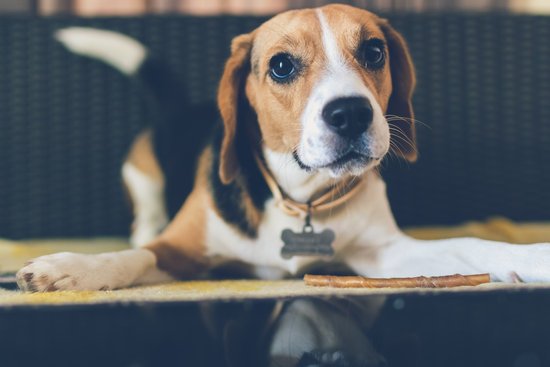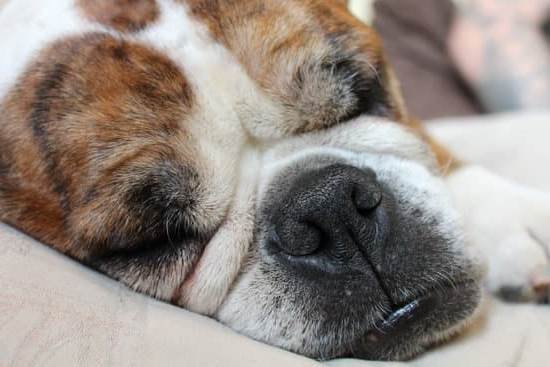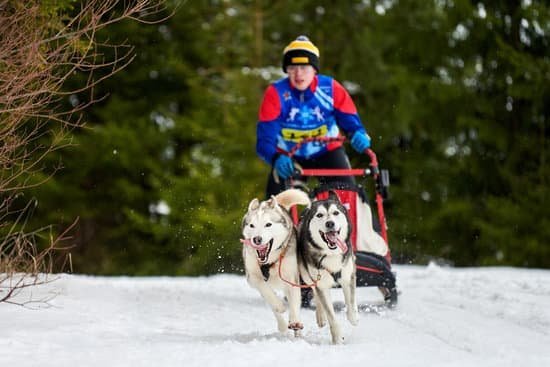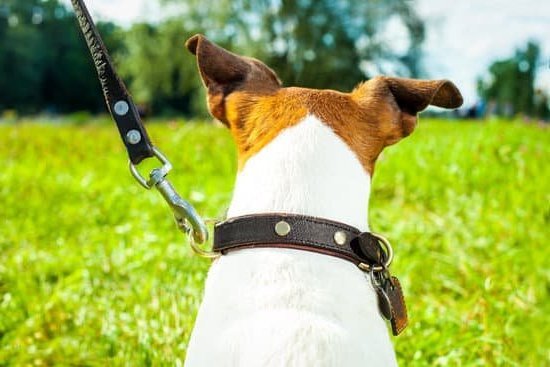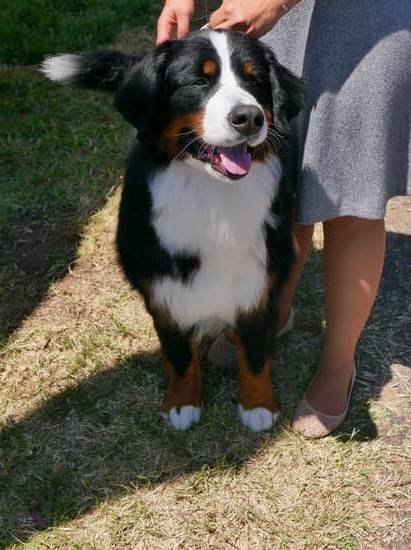Is your furry friend struggling with being alone in the house? Separation anxiety in dogs can be a real challenge, but with the right training and support, it is possible to help your canine companion feel more at ease when left alone.
In this article, we will explore effective strategies for training your dog to be alone in the house, from understanding separation anxiety to using positive reinforcement and seeking professional help for severe cases. By following these methods, you can create a safe and comfortable environment for your dog and build trust through celebrating progress.
Many dogs experience separation anxiety when left alone, which can lead to destructive behavior, excessive barking, or other signs of distress. Understanding the root of this anxiety is crucial in order to address it effectively. By creating a safe and comfortable environment for your dog, establishing a routine for alone time, and gradually desensitizing them to being alone, you can help them feel more secure and less anxious when on their own.
In addition to these methods, providing mental and physical stimulation through interactive toys and regular exercise can also alleviate separation anxiety in dogs. Using positive reinforcement for good behavior further reinforces a sense of security and confidence in your dog.
While utilizing tools and techniques for training is essential, seeking professional help may be necessary for severe cases of separation anxiety. By taking proactive steps to address your dog’s anxiety and celebrate their progress along the way, you can build trust and strengthen your bond with them.
Creating a Safe and Comfortable Environment for Your Dog
One of the key aspects of training a dog to be alone in the house is ensuring that they have a safe and comfortable environment to spend time in. This means providing them with a designated area that is their own, such as a cozy bed or crate. It’s important that this space is associated with positive experiences, so consider placing their favorite toys or blankets there.
In addition to a designated space, it’s essential to make sure the environment is secure and free from potential hazards. Remove any items that could be harmful if chewed on, and consider using baby gates to restrict access to certain areas of the house. By creating a safe and comfortable environment for your dog, you can help alleviate any anxiety they may feel when left alone.
To further create a sense of comfort for your dog, consider leaving an item with your scent, such as an old t-shirt, in their designated area. Your smell can provide reassurance to your dog while you are away, helping them feel more at ease.
It’s also important to consider the temperature and lighting in the area where your dog will be spending time alone. Ensure that the room is at a comfortable temperature and consider leaving some natural light or soothing music on to create a calming atmosphere for your dog.
| Training Tip | Description |
|---|---|
| Create designated area | Provide a cozy bed or crate for your dog’s designated space. |
| Remove hazards | Ensure the environment is free from potential dangers or items that could be harmful if chewed on. |
| Leave item with scent | Consider leaving an item with your scent in their designated area for reassurance. |
Establishing a Routine for Alone Time
When training your dog to be alone in the house, it’s important to establish a routine for alone time. Dogs thrive on routine and structure, so creating a consistent schedule for when they are left alone can help ease their anxiety. Here are some tips for establishing a routine:
1. Set specific times for alone time: Determine specific times of the day when you will be leaving your dog alone. This could be when you go to work, run errands, or have other commitments. Consistency is key, so try to stick to the same schedule every day.
2. Practice short periods of alone time: Start with short periods of alone time and gradually increase the duration as your dog becomes more comfortable. For example, begin with leaving your dog alone for 10-15 minutes and then gradually extend the time as they adjust.
3. Provide a structured environment: Before leaving your dog alone, make sure they have access to water, toys, and a comfortable resting area. Create a safe space where they feel secure and at ease.
Establishing a routine for alone time can help your dog feel more secure and less anxious when left alone in the house. By following a consistent schedule and providing a structured environment, you can help set your dog up for success in learning to be comfortable on their own.
Gradual Desensitization to Being Alone
Introducing Small Periods of Separation
To train your dog to be alone in the house, it is important to start with small periods of separation. This can be as simple as leaving the room for a few minutes while your dog stays behind. Gradually increase the duration of time spent apart, always making sure to return before any signs of distress or anxiety set in.
Creating Positive Associations With Alone Time
One effective way to desensitize your dog to being alone is by creating positive associations with alone time. This can be done by providing a special treat or toy that your dog only gets when they are alone, making them associate being on their own with something enjoyable.
Implementing Controlled Separations
Another method for gradual desensitization is implementing controlled separations. This means leaving your dog alone for short periods and slowly increasing the time as they become more comfortable with the idea. It is important to make these separations predictable so that your dog learns to anticipate and eventually tolerate them without becoming anxious.
By following these steps and being patient and consistent, you can help your dog gradually become more comfortable with being alone in the house. Remember that every dog is unique, so it’s essential to tailor your training approach to fit their individual needs and personality.
Using Positive Reinforcement for Good Behavior
Positive reinforcement is a powerful tool when it comes to training your dog to be alone in the house. This method involves rewarding your dog for displaying the desired behavior, such as being calm and relaxed during alone time. By using positive reinforcement, you can encourage your dog to associate being alone with pleasant experiences, making it easier for them to adjust to your absence.
One effective way to use positive reinforcement is by providing treats or favorite toys when your dog behaves well while alone. For example, you can give them a special treat or a new toy that they only have access to during alone time, creating a positive association with being by themselves. It’s important to make sure that the rewards are given immediately after the good behavior occurs, so your dog can clearly understand what they’re being rewarded for.
In addition to treats and toys, verbal praise and affection can also be used as forms of positive reinforcement. When you return home and find that your dog has been calm and well-behaved while alone, be sure to offer them plenty of praise and attention. This will further reinforce the idea that being alone is a positive experience for them. Consistency is key when using positive reinforcement, so make sure to always reward good behavior during alone time.
| Positive Reinforcement Tools | Benefits |
|---|---|
| Treats | Creates positive association with being alone |
| Toys | Provides mental stimulation during alone time |
| Verbal Praise | Strengthens bond between owner and dog |
Providing Mental and Physical Stimulation
When training your dog to be alone in the house, it’s important to ensure that they are mentally and physically stimulated. This helps keep them occupied and less likely to become anxious when left alone. Here are some ways you can provide mental and physical stimulation for your dog:
- Puzzle toys: Invest in puzzle toys that require your dog to work for a treat. These toys can keep your dog engaged and entertained while you’re away.
- Interactive games: Play interactive games with your dog, such as hide-and-seek or fetch, to keep them mentally stimulated.
- Regular exercise: Make sure your dog gets enough physical activity each day through walks, runs, or playtime in the backyard. A tired dog is more likely to rest peacefully when left alone.
By providing mental and physical stimulation for your dog, you can help reduce their anxiety and keep them happy and content when they are home alone.
Remember that every dog is unique, so it may take some trial and error to find the activities that work best for your furry friend. Be patient and observe how your dog responds to different forms of stimulation. With time and dedication, you can find the right balance of mental and physical engagement for your canine companion.
Overall, ensuring that your dog is mentally and physically stimulated is an essential part of training them to be comfortable when left alone in the house. By incorporating these activities into their routine, you can help alleviate any anxiety they may feel when separated from you.
Utilizing Tools and Techniques for Training
When it comes to training your dog to be alone in the house, utilizing the right tools and techniques can make a significant difference in their behavior. There are various products and methods that can aid in the training process and help ease your dog’s anxiety when left alone.
One effective tool for training is using interactive toys or puzzles that can keep your dog entertained and mentally stimulated while you are away. These toys can help distract your dog from feeling anxious or bored, providing them with a positive outlet for their energy during alone time. Additionally, there are calming aids such as pheromone diffusers or calming collars that can help alleviate stress and anxiety in dogs when they are by themselves.
Another technique to consider is crate training, which can provide a safe and secure space for your dog when left alone. When introduced properly, a crate can become a comforting den for your dog, reducing their anxiety and preventing destructive behaviors. It is important to gradually acclimate your dog to the crate and never use it as a form of punishment.
In addition, technology can also be utilized for training purposes. For example, there are now cameras specifically designed for pet owners to monitor their dogs while they are away.
This not only allows you to keep an eye on your furry friend, but it also helps you assess their behavior during alone time. Some cameras even have features that allow you to interact with your dog remotely through treats or voice commands, reinforcing positive behavior even when you are not physically present.
Implementing these tools and techniques into your training regimen can greatly contribute to helping your dog feel more comfortable being alone in the house. By providing them with appropriate stimulation and security, you can support them in building confidence and independence while you are away.
Seeking Professional Help for Severe Cases of Separation Anxiety
Identifying Severe Separation Anxiety
For some dogs, separation anxiety can be a serious and distressing issue. It is important for pet owners to be able to identify the signs of severe separation anxiety in their dogs. Some common indicators include destructive behavior, excessive barking or howling, pacing, panting, and even self-harming behaviors such as excessive licking or chewing. If your dog displays any of these symptoms when left alone, it may be time to seek professional help.
Consulting With a Veterinarian
If your dog is exhibiting severe separation anxiety, it is crucial to consult with a veterinarian who can help rule out any underlying medical conditions that may be contributing to the behavior. A veterinarian can also provide guidance on potential medications or supplements that may help alleviate your dog’s anxiety.
Working With a Certified Dog Behaviorist or Trainer
In cases where a dog’s separation anxiety is particularly severe, working with a certified dog behaviorist or trainer may be necessary. These professionals have the expertise and experience to develop personalized training plans tailored to your dog’s specific needs. They can assist in implementing desensitization exercises and creating behavior modification strategies that will help your dog become more comfortable being alone in the house.
By seeking professional help for severe cases of separation anxiety, pet owners can ensure that their dogs receive the specialized care and attention they need to overcome this challenging condition. With the right support and guidance, it is possible for even severely anxious dogs to learn how to be alone in the house without experiencing distress or discomfort.
Conclusion
In conclusion, training a dog to be alone in the house requires patience, dedication, and understanding of the underlying issues such as separation anxiety. By following the steps outlined in this article, you can create a safe and comfortable environment for your furry friend while establishing a routine for alone time. It’s important to remember that each dog is unique and may require different approaches to training. However, with consistent effort and positive reinforcement, progress can be made.
Celebrating small victories and progress is crucial when training a dog to be alone in the house. Whether it’s being able to leave your dog alone for a few minutes without them getting anxious or gradually increasing the time they can spend by themselves, it’s important to acknowledge and celebrate these achievements. Building trust with your dog is also key – allowing them to feel secure in their environment even when they are alone.
Remember that seeking professional help is an option if your dog’s separation anxiety is severe or if you’re facing challenges in the training process. A certified dog trainer or behaviorist can provide guidance on specific techniques tailored to your dog’s needs. Ultimately, with time and effort, you can train your dog to be comfortable and confident when alone in the house using the techniques outlined here on how to train a dog to be alone in house.
Frequently Asked Questions
How Do I Get My Dog Used to Being Alone in the House?
Getting your dog used to being alone in the house requires patience and gradual acclimation. Start by leaving them alone for short periods, then gradually increase the duration. Provide them with toys and treats to keep them occupied.
How Long to Train a Dog to Be Left Alone?
The length of time it takes to train a dog to be left alone varies depending on the individual dog and their temperament. Some dogs may adjust relatively quickly, while others may take longer. Consistency and positive reinforcement are key.
How Do I Train My Dog Not to Cry When Home Alone?
Training your dog not to cry when home alone involves desensitization and counter-conditioning. Start by leaving them alone for short periods, then reward calm behavior. Gradually increase the time apart and continue rewarding calm behavior to reinforce the desired response.

Welcome to the blog! I am a professional dog trainer and have been working with dogs for many years. In this blog, I will be discussing various topics related to dog training, including tips, tricks, and advice. I hope you find this information helpful and informative. Thanks for reading!

